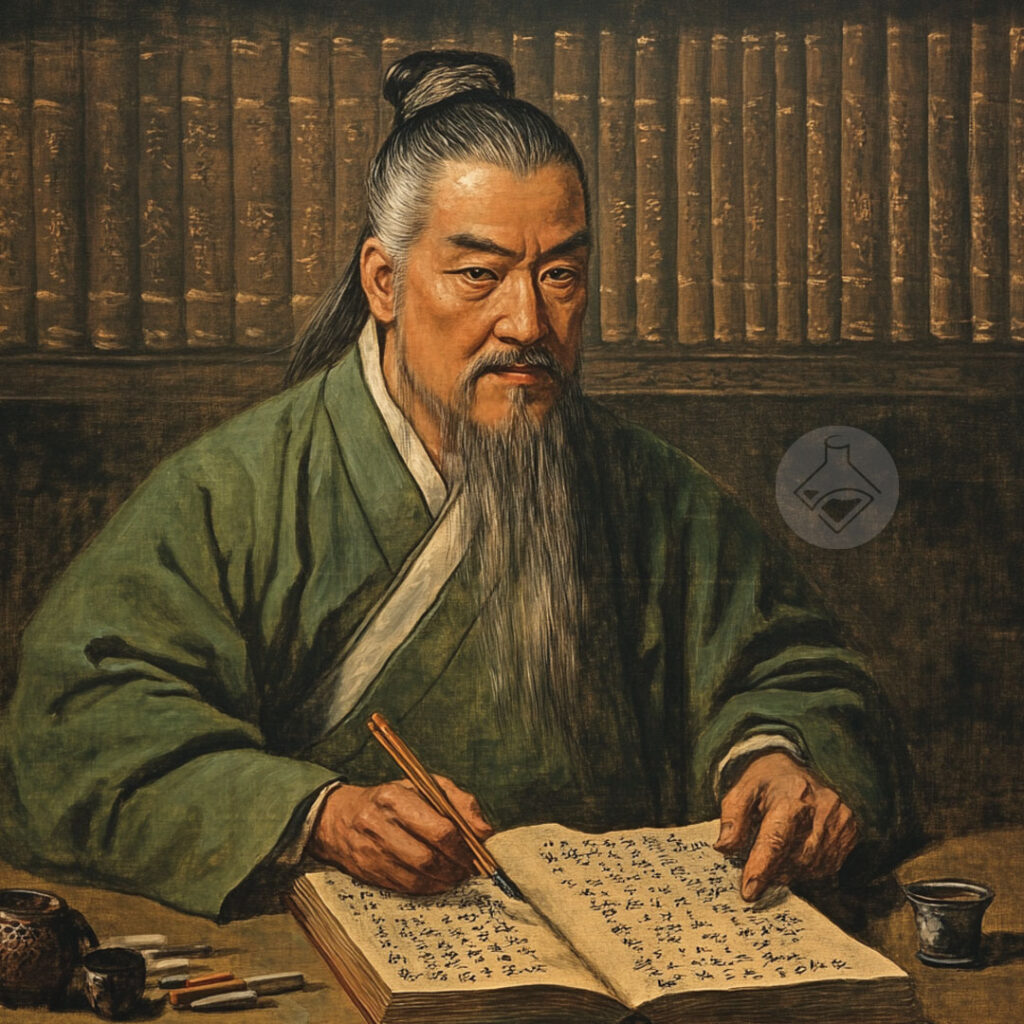Pharmacopeia and Cannabis
Shen Nung: The Father of Chinese Medicine and His Legacy in Cannabis Use
In the annals of ancient Chinese history, few figures stand as tall as Shen Nung, the legendary emperor who is revered as the Father of Chinese Medicine. Shen Nung’s contributions to herbal medicine and agriculture in 2700 B.C. have earned him a mythical status, and his name is synonymous with the foundations of traditional Chinese medicine (TCM). Among the many plants cataloged in his pharmacopeia, cannabis holds a particularly fascinating place, bridging the realms of health, spirituality, and science.
The Mythical Origins of Shen Nung
Shen Nung—also known as the Divine Farmer—is a semi-mythical figure whose life is steeped in legend. According to Chinese folklore, he was born with a transparent stomach, allowing him to observe the effects of various herbs on his body. This unique characteristic enabled him to experiment with a wide range of plants, distinguishing beneficial herbs from toxic ones. Shen Nung is also credited with introducing agricultural practices, teaching his people how to cultivate grains, and laying the foundation for the agrarian society of ancient China.
The Materia Medica: Shen Nung’s Pharmacopeia
Shen Nung’s monumental contribution to traditional Chinese medicine is encapsulated in the “Shen Nung Ben Cao Jing”, or “The Classic of Herbal Medicine.” This text, attributed to him, is considered one of the earliest pharmacopeias in human history. Though the original manuscript is lost to time, later compendiums and commentaries cite Shen Nung’s work extensively.
In his pharmacopeia, Shen Nung classified 365 medicinal plants into three categories:
- Superior (Shangpin): Herbs that promoted overall health and longevity, suitable for long-term use.
- Medium (Zhongpin): Plants that had therapeutic effects but required cautious use.
- Inferior (Xiapin): Potent herbs that treated specific ailments but could have adverse side effects.
Among the superior herbs listed in the pharmacopeia is cannabis, referred to in ancient Chinese texts as “Ma”.
Cannabis in Shen Nung’s Medicine
Cannabis was highly valued in ancient Chinese medicine for its versatile therapeutic properties. Shen Nung recognized the seeds of the cannabis plant (known as “Ma Zi”) for their nutritional and medicinal benefits. While modern science often focuses on the psychoactive compound THC (tetrahydrocannabinol) and the non-intoxicating CBD (cannabidiol), Shen Nung’s use of cannabis primarily revolved around its seeds and oils, which were rich in nutrients and had a variety of applications.
Some of the uses of cannabis documented in Shen Nung’s era include:
- Pain Relief: Cannabis was believed to alleviate pain and discomfort, making it valuable for treating headaches, menstrual cramps, and joint pain.
- Digestive Aid: The seeds were used to stimulate digestion and relieve constipation.
- Anti-inflammatory: Cannabis was employed to reduce swelling and treat conditions like gout and arthritis.
- Sedative Properties: The plant’s calming effects were utilized to treat insomnia and anxiety.
The Cultural and Spiritual Role of Cannabis
Beyond its medicinal applications, cannabis held a spiritual significance in ancient China. Shen Nung’s era marked the beginning of using plants not just for their physical benefits but also for their ability to enhance mental and spiritual well-being. Cannabis was often associated with rituals and practices aimed at achieving harmony between the body, mind, and spirit—a core principle of traditional Chinese medicine.
The Enduring Legacy of Shen Nung
Shen Nung’s pioneering work laid the groundwork for thousands of years of Chinese herbal medicine. His systematic approach to understanding plants and their effects on the human body remains a cornerstone of TCM. Cannabis, as one of the many plants he cataloged, continues to be studied and used in both traditional and modern medicine.
In recent years, the global resurgence of interest in cannabis has reignited discussions about its historical uses. Modern research has validated many of the therapeutic claims made by ancient practitioners, highlighting the foresight and ingenuity of figures like Shen Nung.
Conclusion
Shen Nung’s inclusion of cannabis in his pharmacopeia is a testament to the plant’s historical significance and enduring value. As the world continues to explore the potential of cannabis in modern medicine, the legacy of this ancient emperor serves as a reminder of the profound wisdom embedded in traditional practices. Shen Nung’s life and work remain a bridge between the mythical past and the scientific future, ensuring that his contributions to medicine and agriculture will never be forgotten.
